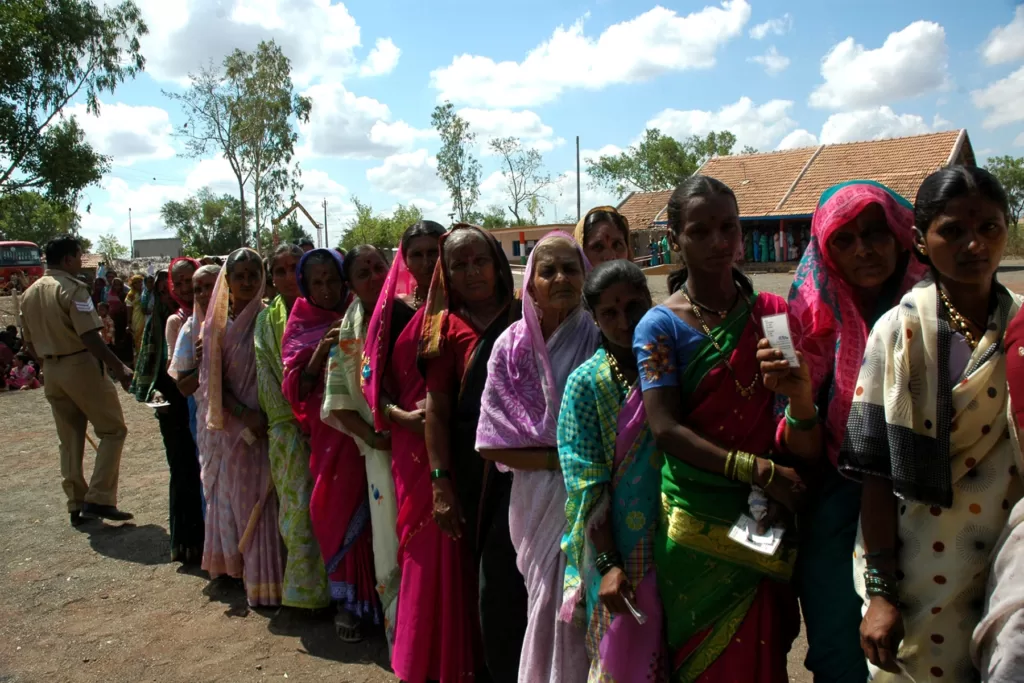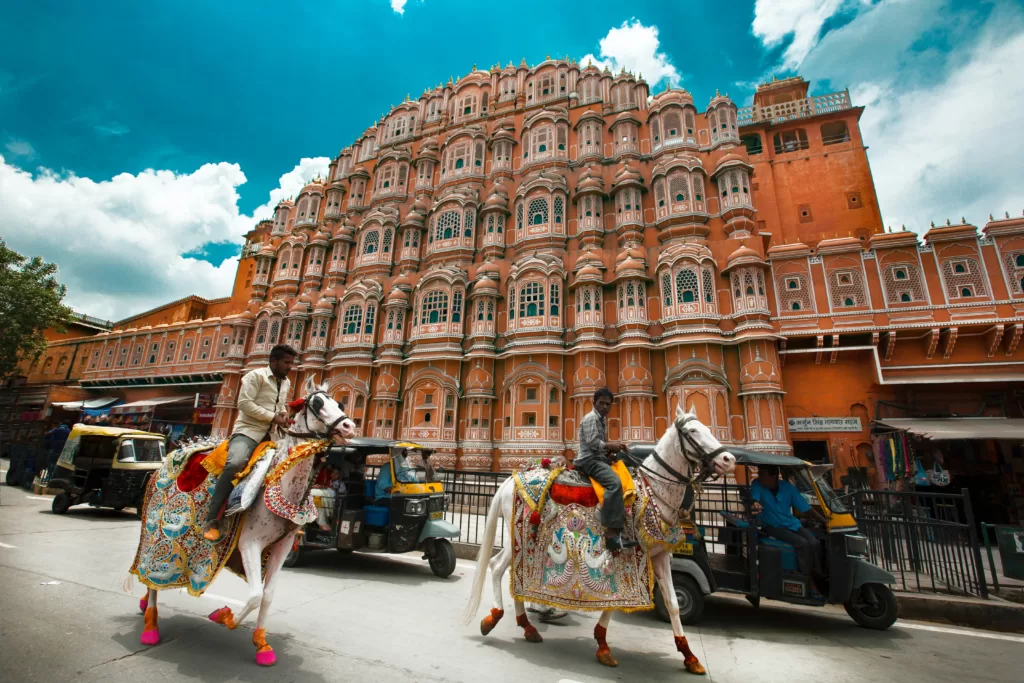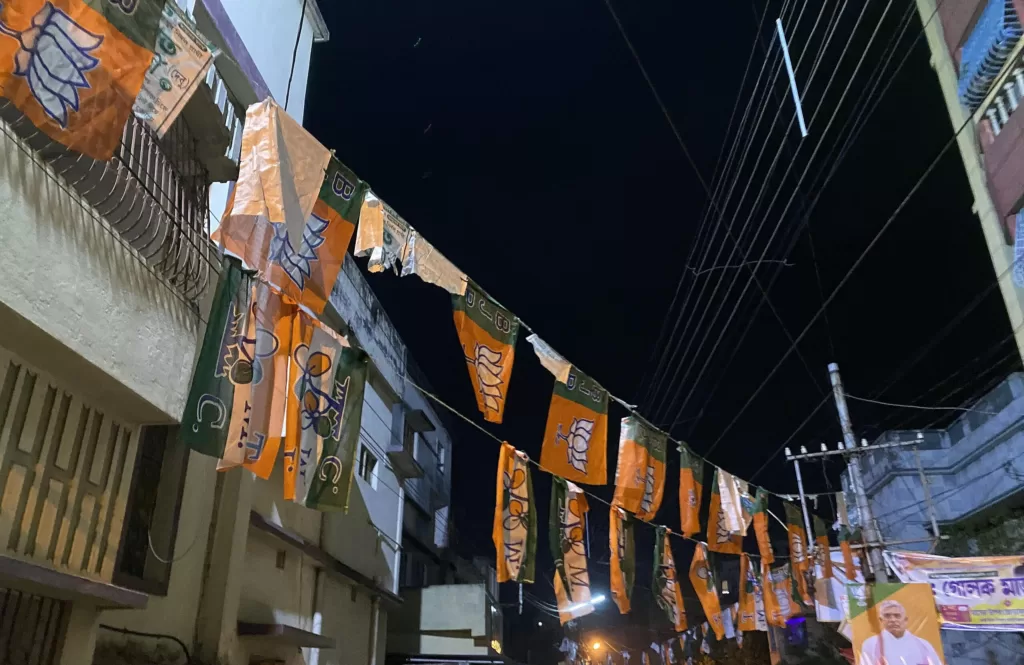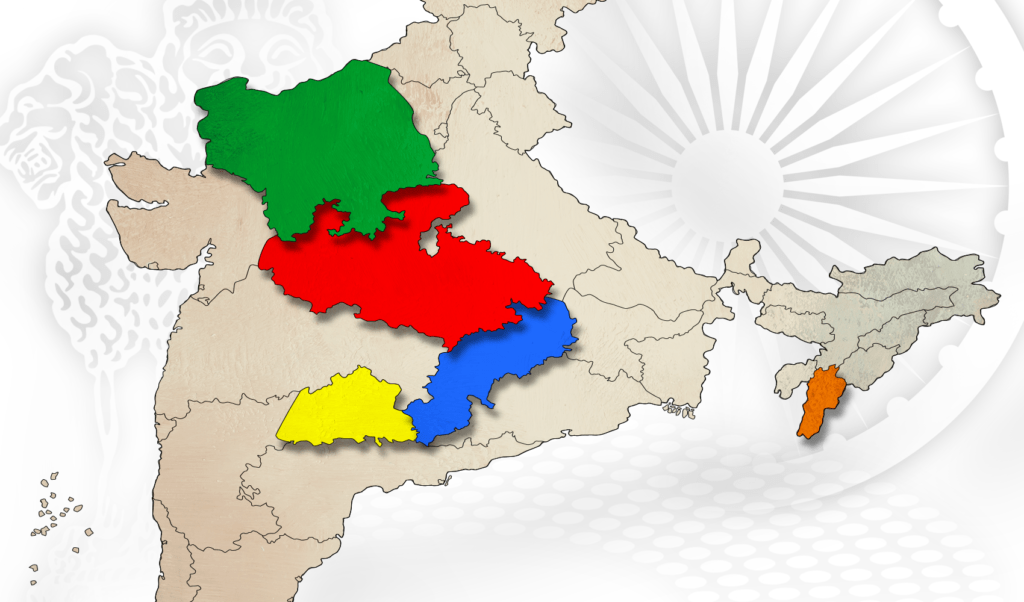Domino effect: Can state elections upset the Modi machine in 2024?
India's state elections don’t usually foretell national polls, but this time around, many will be looking for signs of a winning strategy.
 While not being determinants of national outcomes, the state elections gain prominence because of their proximity to the national polls scheduled for April 2024. : Public.Resource.Org via Flickr CC-BY-2.0
While not being determinants of national outcomes, the state elections gain prominence because of their proximity to the national polls scheduled for April 2024. : Public.Resource.Org via Flickr CC-BY-2.0
India’s state elections don’t usually foretell national polls, but this time around, many will be looking for signs of a winning strategy.
The elections in Madhya Pradesh, Rajasthan, Chhattisgarh, Telangana and Mizoram hold significant weight, being the last state elections before India gears up for parliamentary elections in just five months.
While historical trends suggest differences in voting patterns between state and national elections, this time both the ruling Bharatiya Janata Party (BJP) and the INDIA alliance are under scrutiny.
In Madhya Pradesh, Rajasthan and Chhattisgarh, direct face-offs between the Congress Party and BJP are expected, while in Telangana and Mizoram, the Bharatha Rashtra Samithi and Mizo National Front hold power, with the Congress playing the primary opposition role.
Historically, state elections haven’t consistently mirrored national outcomes, but the upcoming elections gain prominence due to their proximity to the next national polls, scheduled for April 2024, and a potential third term for Prime Minister Narendra Modi.
Modi’s widespread appeal is a consequence of his adept domestic leadership, marked by efforts against terrorism and the implementation of reforms like the GST and demonetisation to combat corruption — a narrative diligently promoted by the ruling party.
Additionally, India’s international stature has been elevated through Modi’s active engagement in forums such as the G20 and highlighted in extravagant advertising within the country, further bolstering his appeal among the electorate.
These elections carry particular importance for Modi, who has been at the helm for nearly a decade and stands as the face of the BJP across all states. The party’s tradition of not declaring a chief ministerial candidate is a strategic move to navigate internal differences until the election results unfold.
The BJP also leverages Modi’s larger-than-life image, portraying him as a statesman who successfully guided India to the Moon, presided over a successful G-20 summit and positioned India as a leader in the Global South.
Modi recently vowed to have a chief minister from the Backward Class in Telangana, echoing a similar statement from Home Minister Amit Shah just 10 days earlier. This move ignited discussions about caste dynamics ahead of the state elections.
The INDIA alliance, primarily led by the Congress, has been pushing for a nationwide caste census, marking a key demand in their first joint elections.
The partners in the INDIA alliance, namely JDU and RJD in Bihar, have pledged to carry out a caste census — a practice that should be observed by the national government in the national census every decade, but a move the BJP government is reluctant about.
Caste-based reforms have been an integral part of the Indian governance framework since its inception and caste dynamics hold a pivotal role in electoral politics, shaping the support base of political parties.
However, unity within the INDIA alliance has appeared shaky from the start. Fractures became evident as Akhilesh Yadav of the Samajwadi Party criticised Congress for not implementing a caste census during its time in power. The discord, especially regarding seat-sharing with Congress in Madhya Pradesh, has been apparent in election rallies.
This internal discord could play into the hands of Modi’s BJP, which is adept at showcasing its organisational strength and capitalising on perceived weaknesses in the INDIA alliance.
Nonetheless, the BJP has its own hurdles to get over before facing the electorate. These include anti-incumbency sentiments against Shivraj Singh Chouhan in Madhya Pradesh, the presence of multiple leaders such as Jyotiraditya Scindia and Vasundhara Raje in Madhya Pradesh and Rajasthan, respectively, as well as the task of establishing a substantial foothold in Telangana.
At the moment, state issues differ from national concerns, and the BJP adeptly manages both.
At the state level, it highlights achievements like the Ladli-Behna scheme in Madhya Pradesh, a cash transfer initiative for women attributed to BJP governance.
Conversely, at the national level, the discourse revolves around Modi’s goals like Mission 2047, the success of the Moon mission and India’s standing in the G20.
The BJP’s Hindutva politics — a political ideology that culturally justifies Hindu nationalism and promotes the idea of India as a Hindu country — takes a backseat in state elections, focusing on welfare schemes and Modi’s leadership.
However, Hindutva remains a potent card alongside Modi’s charismatic image at the national level. The construction of the Ram Mandir stands in Uttar Pradesh as the central tenet of Hindutva politics, offering the BJP significant leverage in electoral politics.
Simultaneously, the opposition adopts a strategy similar to the BJP, concentrating on welfare schemes. Both parties competitively announce similar schemes in their manifestos across states, creating a narrative around support for farmers, women, and the economically disadvantaged.
In Telangana, Congress has pledged 200 units of free electricity, while in Rajasthan and Telangana, both parties promised LPG gas cylinders at a reduced cost of Rs.500. The BJP, in turn, has plans to expand its central scheme for gas cylinder distribution, the ‘Ujjwala Yojana’.
Both parties have committed to establishing a new minimum support price for wheat and an annual support package in cash in various forms. However, the lack of unity within the INDIA alliance is apparent as seat-sharing discussions falter, leading to direct contests between Congress and Samajwadi Party in Madhya Pradesh and Rajasthan.
While state elections provide insights into political strategies and public sentiments, they aren’t absolute indicators of national trends.
The evolving political landscape underscores the BJP’s ability to deflect and adapt, as seen in its strategic realignment of Members of the Legislative Assembly in Madhya Pradesh in 2020. This manoeuvre unfolded when 22 MLAs resigned from the Kamal Nath-led Congress government after Jyotiraditya Scindia’s departure from Congress, resulting in the collapse of the Congress government in the state. Eventually, these MLAs joined the BJP, leading to the reinstatement of Shivraj Singh Chouhan as Chief Minister.
As these elections unfold, political parties will assess their chosen issues and strategies. Yet, the outcome at the centre will remain uncertain, as state and national electorates function independently.
The national narrative is dominated by the Modi-led BJP’s agenda, emphasising the decisive actions of the Modi government. As the BJP highlights its accomplishments, it leaves the opposition parties in a reactive posture, rather than dictating their own agendas.
Dr. Nikhil Sehra is Assistant Professor at the Department of Social and Political Studies at the Manav Rachna International Institute of Research and Studies, Faridabad. Their academic focus revolves around identity, nation, caste, subaltern studies and cultural studies. Their specialisation delves into the intricate realms of national identity and identity issues, particularly within the contexts of Europe and South Asia.
Originally published under Creative Commons by 360info™.
Editors Note: In the story “India state elections” sent at: 23/11/2023 11:12.
This is a corrected repeat.










